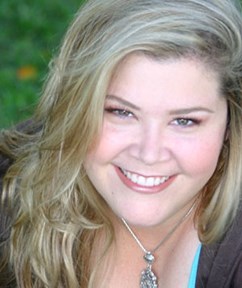By Brian Robin
Erin McNally’s Quest for Harmony Goes Beyond the Notes

As she is wont to do in her role as the Summer Players’ music director, Erin McNally is all about combining harmony and lessons. And by “harmony,” we’re talking about more than carrying a tune.
We’re talking about friendship that goes beyond the script of Seussical.
Since the cast has more than the usual number of first-time Summer Players and that most of the words are sung, McNally partnered first-timers with veterans in what she calls “Seuss-siblings.”
We caught up with McNally, who talked about that, Seussical’s lessons—both musical and in life—and what kind of fun this production delivers on and off-stage.
Why Seussical?
EM: “Honestly, Seussical is hands down one of (Director) Hisa (Takakuwa’s) and my favorite shows to do! The first time we did it, we were surprised at how much emotional depth is actually written into the piece. It truly is an ideal show for young actors who are learning how to incorporate everything they are studying in the Conservatory. We get to create the vibrant world of Dr. Seuss, bringing distinct, colorful characters to life and convey the story with the marvelous score from Lynn Ahrens and Stephen Flaherty. It is equal parts magical and genuine, and is a challenge our actors can successfully meet with joy.”
What musical lessons do you want to teach to your actors through this work?
EM: “One of the most important things I stress with my students is singing with precision and intention. Strong plosive consonants. Pure open vowels. Supporting notes on the perfect pitch. Precise harmonies. And most importantly: Singing as if we are speaking with purpose. With its whimsical melodies, complex rhythmic patterns, and varied styles, Seussical is the perfect playground for actors to practice how to shape their sound with expert articulation and diction, while integrating the energy and emotional arc of the scene. There are a lot of dynamics and accents in the music for the actors to use. I love helping our actors find ways to ‘color’ their lyrics in the same way we color our language when we are speaking. After all, a song is never a song in a musical. It is a scene where characters are using the language of music to talk to someone.”
Tell us about the music challenges of Seussical. What does this require of your actors?
EM: “Because the show is based on the work of a children’s book author, one would think that the music is simple—but that couldn’t be further from the truth! Seussical is deceptively challenging in many ways. First, there is so much music! The show is almost entirely sung thru and underscored. And when there is music, more stylized staging and choreography is usually necessary. So, the actors (and directors) must tackle a huge amount of material in a short amount of time. Not only that, there are many distinctive musical styles represented, and each one requires our young actors to sing with a wide vocal range while maintaining precise clarity and diction in storytelling. Yes, the music is generally vibrant and rhythmically complex. But we must honor the differences between the styles of jazz, Latin, swing, vaudeville, gospel, funk, and pop. What an awesome score to explore!”
Last year for Into the Woods, you created “Sondheim Boot Camp” to prep your actors for the demanding task ahead. Did you do anything similar with Seussical?
EM: “Actually I did! As opposed to other years, this cast consists of many first-time Summer Players. Knowing that we would need to hit the ground running and the kids would need to be really brave and jump in from the start, I thought that instead of a musical ‘boot camp,’ the kids needed to feel like they are truly part of a family. So … I assigned everyone a Seuss-sibling! This would be their brother or sister in the process. Whether it was having someone you can turn to with questions, or being able to mentor a fellow Summer Player through the process, the kids each got to add someone to their chosen ‘family.’ I gave them a little time to get to know each other, and strategically paired long-timers with new players, and with someone who could relate with their experience. Mentorship, empathy and generosity of spirit are all things we value as artists in the conservatory. We do our best work when we are in an environment where we feel safe enough to take big risks and put down our defenses. Even better, it is literally a driving theme in Seussical, to truly listen to others and help nurture and care for our fellow beings. Like Horton says “A person’s a person no matter how small.” Moving forward, everyone felt a little more at ease. And they each had a secret handshake.”
In your role, how fun is this play to work on and direct?
EM: “Honestly, this show is such a joy! I won’t lie, the amount of music and underscoring can feel daunting at times, but there isn’t a day where I don’t chuckle and exclaim ‘Gosh, I love this music!’ I literally get to laugh one minute and well up with tears the next, all while helping my ‘babies’ grow as storytellers and humans. I can’t think of a better way to spend my summer!”
Experience all of the music, playfulness, and sheer fun of Seussical, running for eight performances Aug. 3-11 on the Julianne Argyros Stage. Join all your favorite Dr. Seuss characters on a magical, music-filled journey. The Cat in the Hat and Horton the Elephant take you from the Jungle of Nool to the Circus McGurkus to the World of the Who’s—and a little boy with a big imagination proves that a person is a person, no matter how small.


